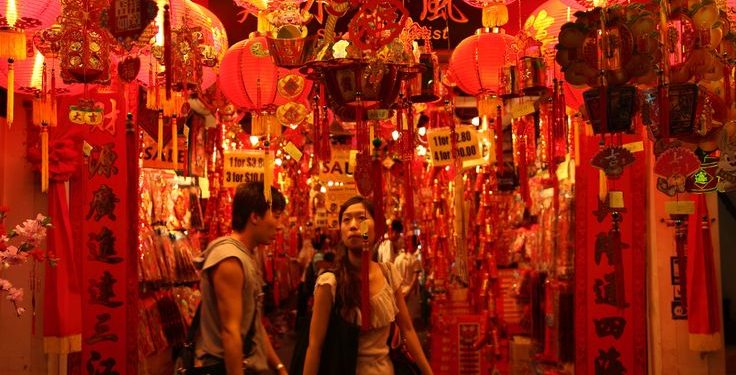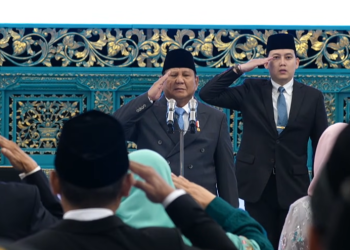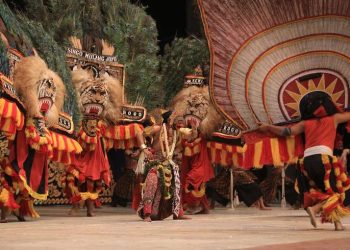Jakarta, Indonesia Sentinel — Chinese New Year, also known as the Lunar New Year, is one of the most significant celebrations for the Chinese community worldwide. Beyond the joyous festivities, Chinese New Year is rich with traditions that have been passed down for generations.
These traditions, believed to date back over 4.000 years, have evolved over time but remain an integral part of the celebration. Here are some of the key customs and traditions observed during Chinese New Year:
Cleaning the House
One of the most important pre-New Year traditions is cleaning the house, usually done the day before the holiday. According to Chinese beliefs, sweeping and decluttering symbolize removing bad luck and misfortune from the past year, making way for prosperity and good fortune in the new one.
However, cleaning the house on New Year’s Day is considered bad luck, as it is believed to sweep away the good fortune of the coming year.
Decorating the Home
After cleaning, families decorate their homes with Chinese New Year ornaments. Many repaint their walls or put up banners with auspicious phrases. Red is the dominant color in these decorations, symbolizing luck, prosperity, and joy. The vibrant red decorations enhance the festive atmosphere and are believed to ward off evil spirits.
Red is the defining color of Chinese New Year celebrations. In Chinese culture, red represents good luck, positive energy, fertility, and blessings for the coming year. It is also a symbol of hope, marking the end of hardships and the beginning of happiness.
People traditionally wear red clothing during the holiday, as it is believed to bring good fortune throughout the year. Red lanterns are also commonly displayed in homes, offices, shopping centers, and marketplaces.
Exchanging Mandarin Oranges
Mandarin oranges, often called kim kiu, meaning “little gold,” symbolize prosperity and good fortune. The tradition of exchanging these oranges is believed to bring wealth and happiness to both the giver and the recipient.
Visiting Family and Friends
A tradition known as bai nian involves visiting relatives and friends to exchange Lunar New Year greetings. It is customary to bring small gifts or mandarin oranges as a sign of respect and goodwill.
Fireworks and Firecrackers
Just like the Gregorian New Year, Chinese New Year is celebrated with dazzling fireworks and the sound of firecrackers. Beyond adding excitement to the festivities, firecrackers and fireworks are believed to scare away evil spirits and bad luck from previous years.
Read Also:
Bandeng Festival: Celebrates Jakarta’s Heritage and Lunar New Year Traditions
Traditional Chinese New Year Foods
Food plays a crucial role in the celebration, with families preparing special dishes for the holiday. Among the most common treats are nian gao (sticky rice cake) and mandarin oranges.
There are at least 8 symbolic dishes traditionally served during the celebration, each carrying its own meaning. For example, layered cakes symbolize prosperity and abundance. Other symbolic dishes includes Nian Gao (Sticky Rice Cake), Fa Gao (Prosperity Cake), Kue Ku (Turtle Cake), Mooncake, Eight-Treasure Candy, Jiaozi (Dumplings), Spring Rolls, and Longevity Noodles.
However, while many dishes are considered auspicious for the New Year, porridge is one food that is traditionally avoided. In Chinese culture, porridge is associated with poverty and hardship, making it an unsuitable dish to serve during a celebration that symbolizes prosperity and new beginnings.
Hoping for Rain
Rain during Lunar New Year is believed to bring blessings and abundant fortune. Many Chinese families hope for rainfall during the celebrations, seeing it as a positive omen for the year ahead.
Giving Red Envelopes (Angpao)
Lastly, a beloved tradition during Chinese New Year is the giving of red envelopes, known as angpao, which contain money. These are typically given to children, unmarried family members, and elders.
The red envelope symbolizes blessings, wealth, and good luck for the recipient in the year ahead. It is usually distributed on New Year’s Eve or on the morning of the holiday before temple prayers.
Barongsai and Liong Dances
The lion (barongsai) and dragon (liong) dances are a signature part of Lunar New Year festivities. Beyond entertainment, these performances are believed to bring good luck and drive away negative energy. The vibrant dances are usually accompanied by traditional music, adding to the festive atmosphere.
Cap Go Meh Festival
Lunar New Year celebrations conclude with the Cap Go Meh Festival on the 15th day. The event features grand parades, dazzling lantern displays, and a variety of delicious foods, including the signature lontong Cap Go Meh.
Chinese New Year is not just a time for celebration but also a way to honor traditions that have been upheld for centuries. Through these customs, families welcome the new year with hope, joy, and a sense of renewal.
(Raidi/Agung)
























